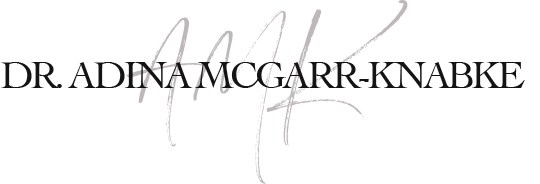
by Dr. Adina McGarr | Jun 30, 2010 | Uncategorized
My therapeutic orientation is psychodynamic and therefore works on addressing the underlying, often unconscious issues that are manifesting as symptoms or problematic behavior. Specifically, I utilize an object relations approach to therapy, which helps clients gain insight into their internal world, their patterns of relating and attaching, and their use of psychological defense mechanisms.
This type of therapy rests on the principles that our personalities are the result of many different developmental stages. What happens when we are infants, children, adolescents, and young adults shapes the way we see the world, the kind of relationships that we have, the way we feel about ourselves in relations to others, and the needs we seek to have fulfilled.
Through the process of therapy, you will be encouraged to get in touch with the past in order to re-examine and process the formative and sometimes painful experiences unique to you. As treatment unfolds and progresses, you will have a greater understanding and awareness of your internal world, your unconscious motivations, and your choice in relationships. As rigid and maladaptive schemas are abandoned, you will experience more fulfillment and freedom in important areas.

by Dr. Adina McGarr | Jun 27, 2010 | Uncategorized
Anorexia has the highest mortality rate of any psychiatric disorder at 19%

by Dr. Adina McGarr | Jun 26, 2010 | Emotions
Emotions cannot be permanent. That’s why they are called “emotions”–the word comes from “motion,” movement. They move; hence, they are “emotions”. From one to another you continually change. -Osho
Intense emotions have been likened to an ocean wave. They crash over you and may knock you off your feet, however, just like a wave, they always recede. Learning to ride these waves of emotion without “acting out” is a necessary life skill.

by Dr. Adina McGarr | Jun 8, 2010 | Uncategorized
“Addiction is a chronic and relapsing brain disease characterized by uncontrollable drug seeking behavior and use. It persists even with the knowledge of negative health consequences.” Scott Lucas

by Dr. Adina McGarr | Jun 7, 2010 | Eating Disorders
Binge Eating Disorder is characterized as recurrent episodes of binge eating that, on average, occur at least 2 days a week for 6 months. Persons with binge eating disorder feel the compulsion to eat large amounts of food and often feel out of control to stop. Even when very full, these individuals will continue to eat till to the point of nausea and extreme gastrointestinal distress.
Most people with this eating disorder are overweight and a great number of them are obese, as the compensatory behaviors seen in bulimia (i.e. laxative abuse, vomiting, etc.) are not present in binge eating disorder. Similar to other eating disorders, shame, isolation, and depression often plague the individual. (more…)

by Dr. Adina McGarr | Jun 6, 2010 | Eating Disorders
Individuals suffering from bulimia find themselves caught in the devastating and addictive binge-purge cycle. Bulimia is characterized by binge eating followed by harmful compensatory behaviors in an effort to prevent weight gain.
A binge episode is defined as the intake of an inordinately large amount of food, in a discrete amount of time (usually less than two hours), in which the individual experiences a sense of a lack of control over eating. Inappropriate compensatory behavior to prevent weight gain includes self-induced vomiting, fasting, excessive exercise, laxatives, diuretics, enemas, and/or medications. Similar to anorexia, the individual is overly concerned with body shape and weight and experiences a distorted body image.
Some medical complications may include:
• Acid Reflux
• Amenorrhea (loss of menstrual cycle)
• Bone density problems (Osteoporosis)
• Bruising of the skin
• Cardiovascular problems
• Dehydration
• Dental problems
• Digestive difficulties
• Dry skin, hair, and nails and hair loss
• Edema (Swelling of soft tissues resulting from excess water accumulation from laxative or diuretic abuse)
• Electrolyte Imbalances
• Gastrointestinal complaints (cramps, bloating, constipation, diarrhea, incontinence)
• Hypo- and Hyperglycemia (low/high blood sugar)
• Hyponatremia (low sodium)
• Infertility
• Iron-deficiency anemia
• Ketoacidosis (high level of acids build up when the bosy burns fat instead of sugar/carbs)
• Kidney infection and failure
• Lanugo (soft downy hair on face, back, and arms)
• Liver failure
• Low blood pressure or hypotension
• Low body temperature
• Low platelet count
• Malnutrition
• Muscle Atrophy
• Pancreatitis
• Parotid gland swelling
• Seizures
• Sleep problems
• Tearing of esophagus
• Weakness and fatigue

by Dr. Adina McGarr | Jun 6, 2010 | Eating Disorders
Bigorexia/Muscle Dysmorphia
Individuals suffering from bigorexia also known as muscle dysmorphia, constantly worry about being too small and frail looking and are obsessed with gaining muscle mass. Though this disorder is more common in men, it also occurs in women. Steroid use is not uncommon, as these individuals will take dramatic measures to achieve their goals. However, similar to anorexia, where an individual never feels thin enough, individuals with muscle dysmorphia often do not feel big enough, despite intense body building regimes and strict, rigid diets. Daily life is consumed with obsessions about exercise, food, and feelings of inadequacy. Similar to other eating disorders, social, psychological, and occupational functioning are often significantly impaired and health complications abound.

by Dr. Adina McGarr | Jun 3, 2010 | Eating Disorders
Orthorexia Nervosa
Orthorexia Nervosa is not as well known or discussed as Anorexia and Bulimia Nervosa, nor is it a recognized medical diagnosis, meaning that, to date, insurance companies will not reimburse for the treatment of orthorexia. This disorder has things in common with other eating disorders, but differs in important ways. Persons suffering from orthorexia find themselves compulsively obsessed with eating pure and healthy food. This might include organic or other foods sold in health stores. This obsession is frequently so intense that when rules are broken, individuals feel compelled to punish themselves, often by maintaining an even stricter diet or by fasting.
Individuals struggling with orthorexia obsess over what is eaten, how much of it is eaten and how it was prepared. This obsession with food takes over a person’s life, often disabling them to live any type of ordinary life, as their life becomes secondary to the obsession with food. Social relationships are compromised, occupational difficulties can ensue, and depression and anxiety are common. These individuals often need the help of a psychologist or the assistance of an eating disorder treatment center to recover.
by Dr. Adina McGarr | Apr 4, 2010 | Abuse
Child neglect falls under the umbrella of child abuse and, not only, accounts for 60% of all reported child abuse cases it is also the most lethal. The definition of neglect is failure to provide safety, shelter, supervision, and adequate nutritional needs. There are two main forms of neglect, severe and general. Severe neglect includes severe malnutrition, wilfully causing the child to be endangered, intentional failure to provide food, clothing, shelter, and/or medical care. General neglect encompasses negligent failure of the caretaker to provide adequate food, clothing, shelter, supervision, and/or medical care, where the result has not been physical injury to the child.
Neglect can be further broken down into three sub-categories, known as, physical, educational, and/or emotional neglect.
1.) Physical neglect-involves the refusal or suspension of seeking health care, inadequate supervision, abandonment, and/or expulsion from the home.
2.) Educational neglect-involves continued truancy, failure to enroll in school a child of mandatory age, and/or failure to attend to special educational needs.
3.) Emotional neglect-involves significant inattention to the child’s needs for affection and psychological care, any spousal abuse the child witnesses, and/or permissible drug or alcohol use by the child.
by Dr. Adina McGarr | Apr 4, 2010 | Abuse
Physical abuse is the second most common form of child maltreatment. The definition of physical abuse may vary from state to state, but broadly speaking it is any physical act by a caregiver that results in a child being hurt or injured. If you suspect that a child is being mistreated by their caregiver, notify the Department of Child and Family Services. Many people fail to act because they are unsure, but a reasonable suspicion is grounds to make a report and the authorities can investigate and make a proper determination. Others fail to report because they don’t feel it is their place, but if a child is being abused they need someone to stand up for them. Child abuse has been linked to impaired physical emotional, and mental development.








